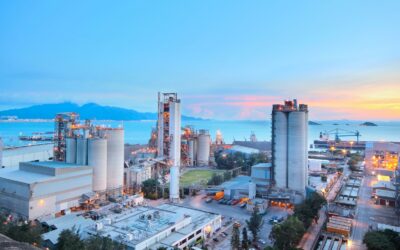It’s easy to say 2020 was a year of significant change for light industry: forced shutdowns, staff shortages, and lightning-fast refitting all took place last year. However, 2020 was a banner year in an entire decade of change. Those changes will impact your client’s businesses more than the pandemic.
From robotics and automation to reshoring, factory floors across the U.S. will continue to change for the foreseeable future. As a broker, you can help your clients navigate those changes by ensuring they protect their workers with the right technology and coverage.
How can you support clients in light industry this year and next? Use these tips to strengthen relationships and add value to your broker offering.
Communicate More Regularly
A lot is happening in the world right now that directly impacts American industry. The perfect storm of rising and unpredictable tariffs, growing wages in China, India, and Indonesia, and the total cost of business ownership will continue to impact strategy for businesses across the country. And these don’t even include the hot-button issues, like COVID-19 and supply chain disruptions.
As your clients rethink their local and global strategies, you want to stay on top of what’s coming next for them. Get in touch more often than once a quarter to learn more about what your clients face and what short, medium, and long-term plans they have to tackle new business landscapes. With their goals in mind, you can then be an ally as they broach these changes with their carriers.
Serve as Pointperson on Insurance Issues
As light industrial clients face change, their insurance needs will also evolve. Brokers are uniquely poised to help ensure all their clients have exactly the coverage they need.
What kind of issues are brokers seeing? You’re about to see light industrial labor take a wild ride.
Older workers are looking at retirement, and they’ll take company knowledge out the door with them. Projections suggest there will be 2-3.5 million unoccupied manufacturing positions in just four years (by 2025).
Finding new labor in a strong economy is difficult enough. Many clients will need to look outside traditional hiring pools to staff their floors. You could see labor issues become even trickier as light industry brings back jobs from offshore locations.
What can you do? It’s vital to help clients understand the impact of their labor force’s changing shape on their workers compensation premiums. Fluctuating payroll, changing class codes, and the risk brought on by inexperienced workforces can cause premiums to become unpredictable.
Reassess Risk in the Face of New Technologies
Light industry is seeing increasing adoption of new technologies. Robotic process automation (RPA) and intelligent automation are high-value, advanced processes that will generally increase competitiveness across light industry.
New methods of operation will mean changes to their risk profile. While increased automation lowers risk in some ways, it can also heighten risk in ways you might not expect. Adoption of these technologies can be hampered by fragmented operating environments, the limits of legacy infrastructure, and the complexity of operations.
Your role is to think about what new technologies mean for clients’ risk management programs. Then, you can identify what updates they need to their plan and potentially even their coverage.
Keep Up with Management of Organizational Change (MOC) Processes
For industrial clients, change is rarely solely administrative. A change to equipment, materials, or facilities is more likely to result in a physical disaster. As a result, OSHA 29 CR 1910.119(I)(1) requires clients to develop and implement written Management of Organizational Change procedures.
An MOC needs to happen when a change impacts:
- Technology
- Process chemicals
- Procedures
- Facilities
- Equipment
Changes to the five elements will also impact your clients’ risk profile. So, it’s important to converse with clients to confirm that they are using MOC when it’s time to roll-out a new change. When you talk, make sure they run the MOC (per OSHA requirements) and then talk through their results to identify any insurance-relevant issues, even if it’s not workers compensation-related.
Be an Asset to Your Industrial Clients
Light industry will be almost unrecognizable in only a few short years. However, it’s not a sector that allows businesses to swap out the old with the new: it takes work, planning, and very conscious MOC efforts to make a change safe and permanent. And all that time, worker safety hangs in the balance.
Are you ready to help your industrial clients manage change and embrace the future? Learn more about Foresight’s cutting-edge technology solutions to see how we can help brokers and light industry clients add value to their business.



